
© Dominik Mentzos. (Click image for larger version)
The Forsythe Company
N.N.N.N., Study #3
London, Sadler’s Wells
18 June 2013
www.theforsythecompany.com
www.sadlerswells.com
What Merce Cunningham devised as an Event, William Forsythe calls a Study. In both cases, the choreographer has combined selections from his back catalogue to make a ‘new’ work, stripped of all previous associations: no sets or costumes, random props, arbitrary musical accompaniment to be ignored by the performers. Cognoscenti of the choreographer’s oeuvre might be able to identify extracts; those not in the know make of each performance what they will.
For his company’s latest Sadler’s Wells season, Forsythe preceded Study #3 from 2012 with a quartet for male dancers from 2004. Its title, N.N.N.N, presumably means n for anybody, quadrupled. According to the programme note, the men represent ‘a mind in four parts, writing out a text of the voice of the body’. What this means in practice is an ever-more-complex interplay of 16 limbs as the men, Amancio Gonzalez, Cyril Baldy, Fabrice Mazliah and Ander Zabala, link up, split apart and recombine.
The piece starts and ends with a dancer alone on a bare stage, treating his arm as an unfamiliar appendage. Gonzalez clasps his wrist, puts it to his forehead and wrestles with his elbow before being joined by the others, investigating everywhere arms can go. Their manoeuvres are punctuated by slaps, grunts and gasps providing a sound track. N.N.N.N. was originally accompanied by a Thom Willems score – but not at the Wells. Just mobile phones going off at the start. When the men pair up, their tussles resemble Russell Maliphant’s duets for Michael Nunn and William Trevitt, on speed.
Though the men behave like college jocks, regular guys, they are obviously versatile dancers: their combinations are tightly choreographed, their playfights rhythmical, their timings precise. They’re elegant even when they’re clowning. Do we learn about them as individuals after 20 minutes in their company? Not really, which may be the reason for the anonymous title. They serve as cogs in a contrapuntal mechanism, while remaining vulnerable, everyman beings.
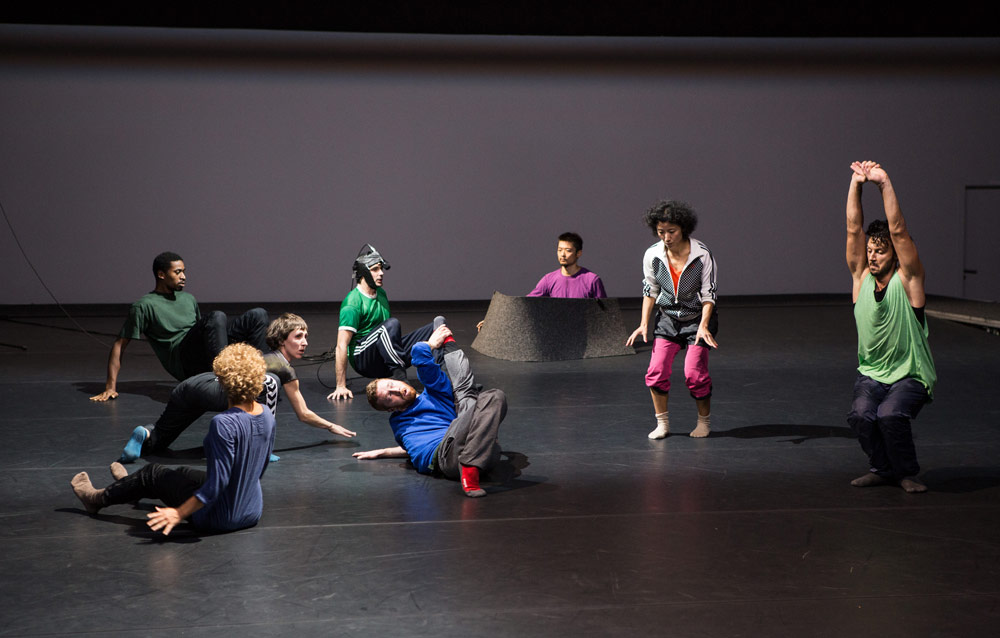
© Dominik Mentzos. (Click image for larger version)
Does Study #3 reveal how Forsythe’s choreography has evolved over 30 years, first with Ballett Frankfurt (1984-2004) then with his own, smaller company, from 2005 on? Not really, since he excludes his ballet-based works – with the possible exception of Quintett (1993), bits of which I think I recognised. Since it has always been danced to a memorable Gavin Bryar’s score, I can’t be sure I could ‘recontextualize’ it in another setting, as the programme note advises. The 27 extracts were danced by 17 company members in (mostly) brightly coloured tops and dark tracksuit bottoms. A rack of clothes on one side of the stage went unused. Electric cables littered the floor, connected to microphones on stands and a loudspeaker in a plastic bowl.
The collage of choreography was linked by largely incomprehensible spoken contributions from company members, some concealed by bizarre headgear. Maybe the message is to make us pay attention to the voice of the bodies, not the speakers. Thom Willems is credited with the musical score. Movement sequences range from very swift to very slow, from intimate couplings to duets and trios where the participants ignore each other. A man in black sits on a chair, screeching repeatedly and flinging his arms wide, watched dispassionately by his fellows. Interlocked pairs like Japanes netsuke take ages to disentangle their limbs. A woman in a burgundy leather jacket (Ildikó Tóth) seems to turn herself as well as her clothing inside out. The choreography frequently seems counter-intuitive, moving backwards instead of forwards, disconnecting one part of the body from another, revelling in dis-co-ordination. Ingenious and disconcerting, it’s as unenjoyable to watch as listening to an ill-tuned radio.

© Dominik Mentzos. (Click image for larger version)
The most entertaining section is a kind of bird mating ritual to (live) tweets and squawks from the microphones. Eloquent and unpredictable, it’s Forsythe at his most intriguing. But then Dana Caspersen launches into a monologue mourning The Loss of Small Detail and sets off into an exasperating parody of classical ballet. After 55 minutes, that’s more than enough.












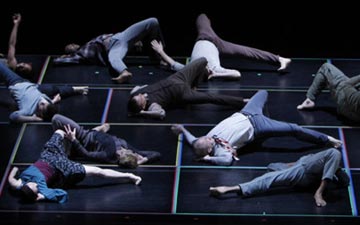
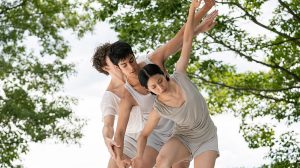
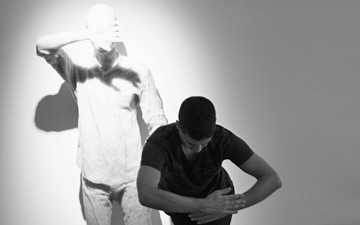

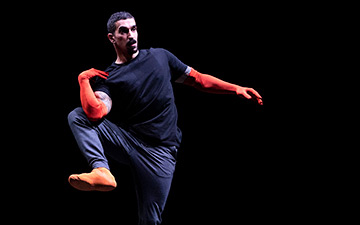
You must be logged in to post a comment.